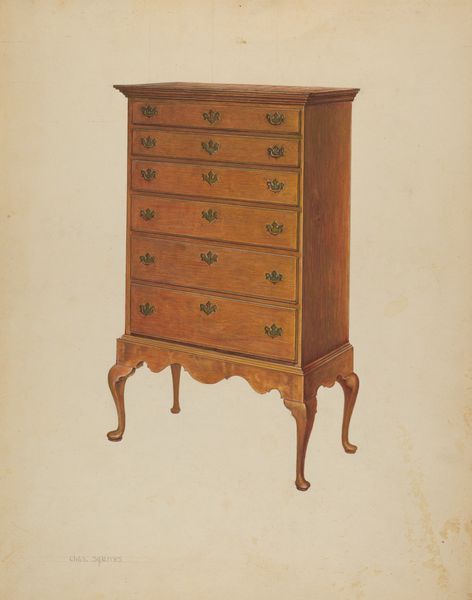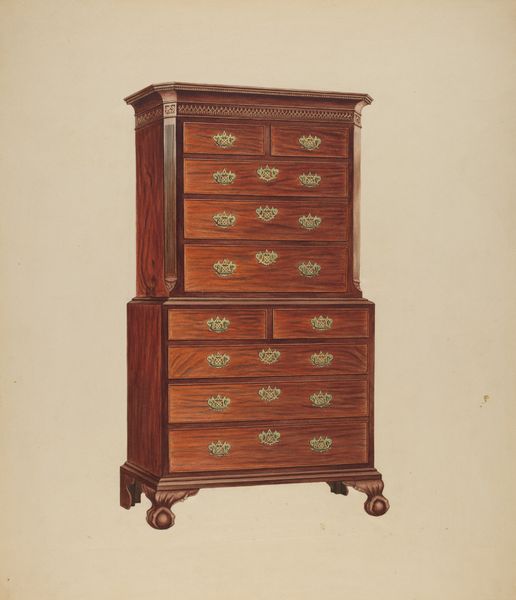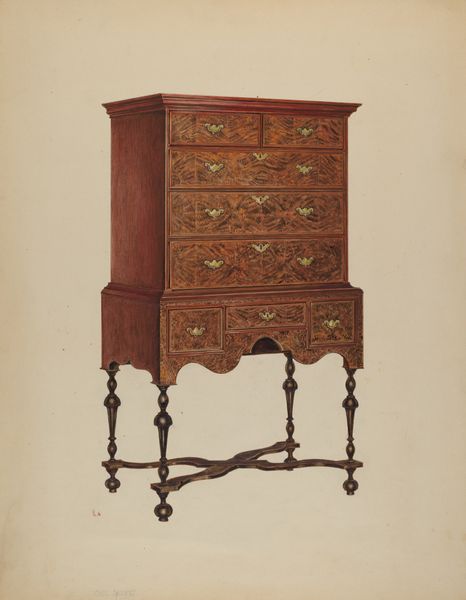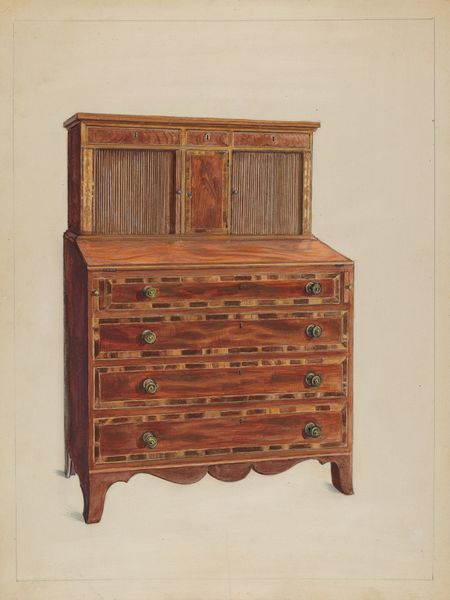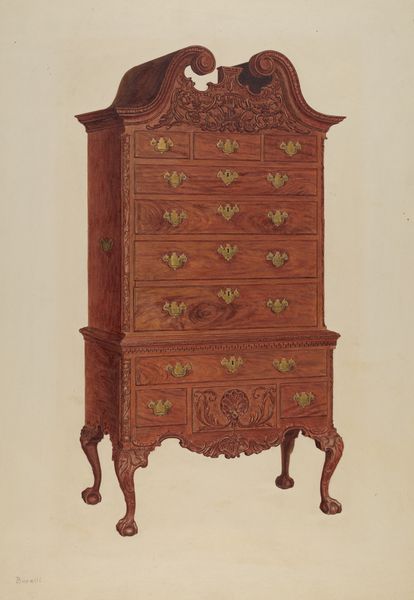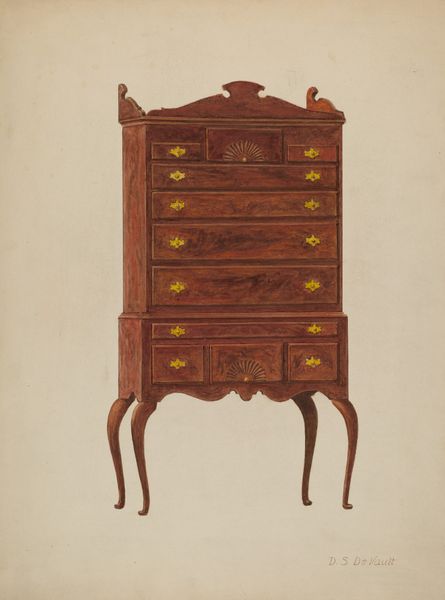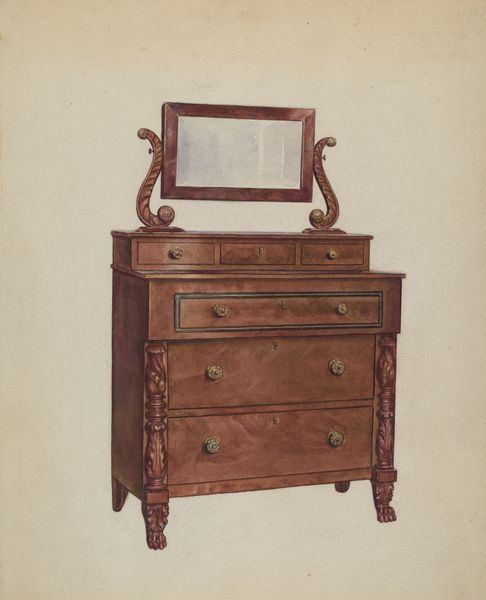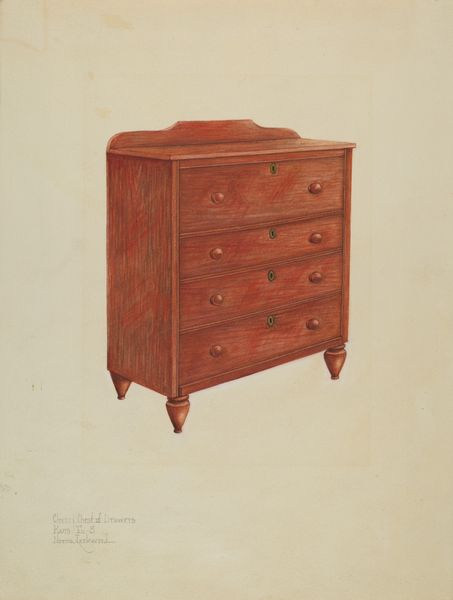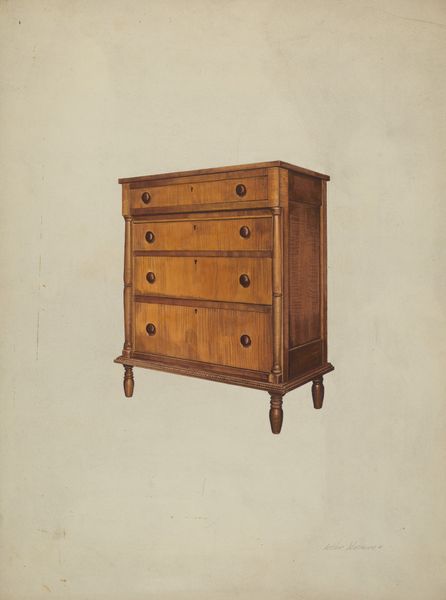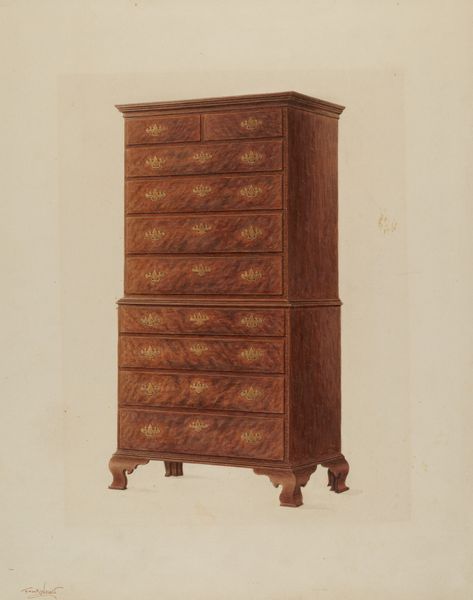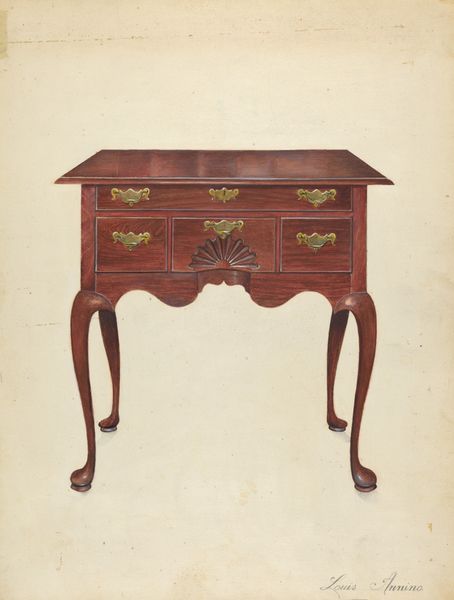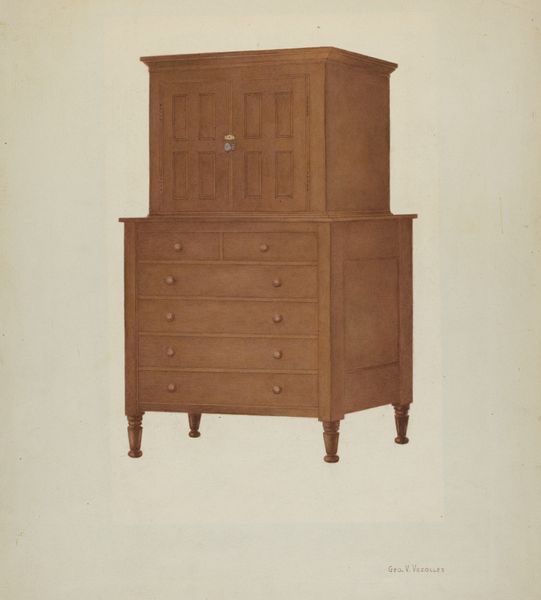
drawing, watercolor, wood
#
drawing
#
water colours
#
watercolor
#
wood
#
watercolour illustration
#
decorative-art
#
watercolor
#
realism
Dimensions: overall: 27.9 x 22.9 cm (11 x 9 in.) Original IAD Object: none given
Copyright: National Gallery of Art: CC0 1.0
Curator: Ralph Boyer's "Early American highboy," made between 1935 and 1942, presents a detailed rendering in watercolor of a classic furniture piece. What stands out to you initially? Editor: It evokes a strong sense of domesticity and perhaps a touch of yearning for a perceived simpler past. The rendering has an almost nostalgic, comforting feel, doesn’t it? It's meticulous, but there's also a warmth radiating from the wood tones and the soft edges achieved through watercolor. Curator: Absolutely. The choice to depict this object specifically from that period during the Great Depression—raises interesting questions. In that time many felt displaced; the "highboy" itself becomes an anchor to ideas of home and tradition but potentially only for a privileged few during that era. How do the iconic details affect your viewing? Editor: The Queen Anne legs are incredibly suggestive. Notice their curvature ending in stylized "hoof" feet—a symbol of grounded stability but simultaneously poised grace and sophistication. And the symmetry overall projects order and control, which seems significant amidst societal and personal anxieties. It almost seems to hint at an aspirational vision that might have eluded some at the time of its rendering. Curator: Exactly. We have a blending of aesthetic preference that harkens to stability while representing exclusion from stability depending on the viewer’s context. One must also consider who owns this idealized highboy and how their identity might affect both its historical and contemporary value. What about the symbols beyond what we easily see here? Editor: The highboy, with its drawers acting as compartments, is almost like the body in that it functions to organize material and personal elements. Keys and drawers function together to control private spaces. The wood grain could symbolize roots, lineage, history. It seems to project permanence against the uncertainty of the era during its creation. The highboy also evokes vertical aspiration as the family wealth increases with each upward drawer—adding to an image that is in itself an object lesson. Curator: I appreciate that connection to wealth as its inherent construction evokes access and exclusivity for select populations during a trying time. By examining class, access and traditional presentation, we are invited to challenge social narratives regarding our own roles during hardship and to reassess what constitutes security. Editor: Looking closely does transform how one understands it. These familiar objects hold so much—personal, cultural, universal. It all makes you realize the stories within that inanimate piece.
Comments
No comments
Be the first to comment and join the conversation on the ultimate creative platform.

